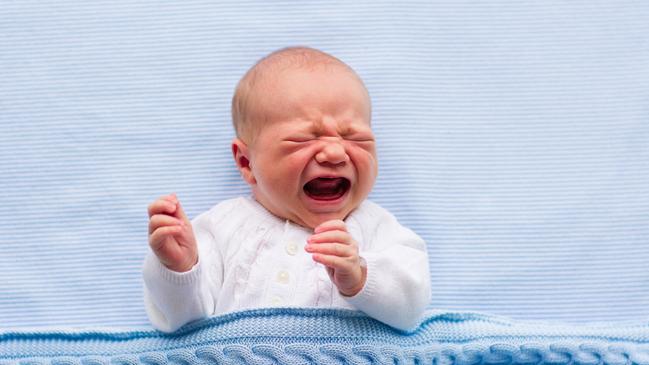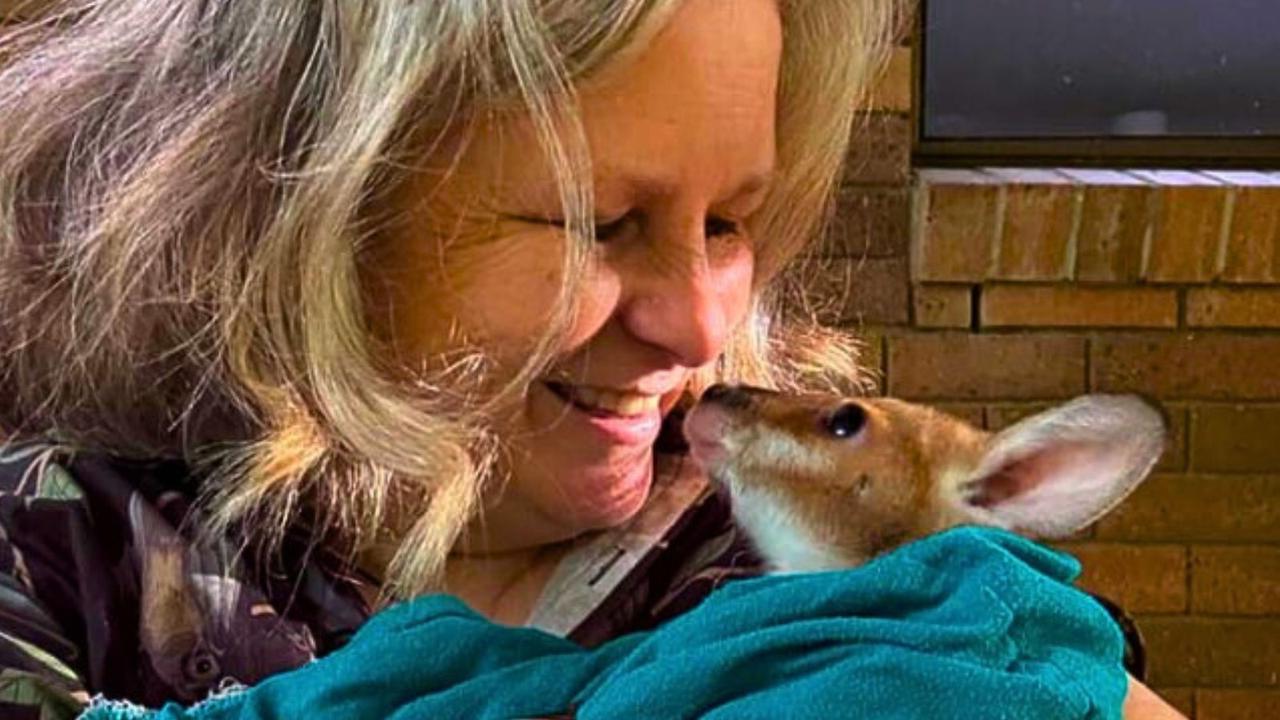Nappy valleys vs fertility droughts — who is making babies?
These 25 southeast Queensland suburbs are baby-making hubs with the birthrate jumping in some areas by as much as 466 per cent. SEE HOW YOUR SUBURB RATES

North
Don't miss out on the headlines from North. Followed categories will be added to My News.
IT’S baby boom – or bust – time in Queensland.
The latest Australian Bureau of Statistics figures show new nappy valleys are swaddling southeast Queensland but inner-city suburbs are in the grip of a fertility drought.
Inside our baby boomer, fertility drought suburbs
And while there were more babies born in southeast Queensland than the rest of the state combined, regional centres were more than pulling their weight in the baby-making stakes.
Across Queensland, there were 61,158 births registered, a decline of about 1 per cent on 2016 figures.
Mt Isa claimed the baby-making crown by recording the highest total fertility rate — a measure of how many babies child-bearing-aged women were expected to have based on the number of births in the area — at 2.7.
50% OFF FOR THE FIRST 12 WEEKS WHEN YOU SUBSCRIBE
Brisbane local government area recorded the lowest rate in nearly a decade, at just 1.51, which has been on a downward trend since at least 2011, when it was 1.71 babies.
Queensland fertility rate is 1.82, which has also been dropping since 2009’s Baby Bonus fuelled high, when it was 2.174.
.
.
In terms of the number of babies welcomed into sunshine state in 2017, the highest numbers were naturally recorded in areas with the highest population — southeast Queensland’s Brisbane (14,598), Gold Coast (6985), Moreton Bay (5539), Logan (4960) and Ipswich (3351). Within those areas, the most babies (553) were registered the Upper Coomera-Willow Vale area, followed by North Lakes-Mango Hill area (527), in the Moreton Bay region.

Surprisingly, Townsville’s outer suburb Deeragun — population 24,104 — beat the rest of the metropolitan suburban-sized areas to third position on the top births list, at 511 babies registered as being born to parents living there. That’s actually a drop from 2016’s 522 babies.
Cairns had the largest increase in births registered there, up 124 on 2016 figures, to 2276 newborns in 2017. Logan council area, south of Brisbane, had the next highest jump, at 115 babies more in 2017 than 2016, with a total of 4950 born in 2017.
.
MORE: Shock at state of Queensland population growth
Migrants could be restricted from moving to Queensland coast
.
MUM’S THE WORD ON CITY’S OUTSKIRTS
The ABS stats for 2017 show while fertility rates are booming in the far south and west on southeast Queensland, they are at record lows in city-fringe suburbs.
Logan Central (3.11) and Riverview (2.94) have higher total fertility rates (TFR) than any other suburb-sized statistical area in the Greater Brisbane Statistical Area, covering from northern Moreton Bay region to the Ipswich hinterland to Beenleigh.
While those areas didn’t record the highest number of babies born in 2017, they did record the highest number of babies per child-bearing-aged woman living there.
In contrast, fertility rates have hit a decade low in the Brisbane Inner City statistical area, covering suburbs such as Clayfield to The Gap and Toowong, and across the river to Highgate Hill and Norman Park, at just 1.15 babies per woman.
The highest number of babies — 527 — were born to mums living in the ABS statistical area of North Lakes-Mango Hill, north of Brisbane.

That represents a 44 per cent increase on 2011 births registered to parents living there.
Urbis national economics advisory director Richard Gibbs said the statistics indicated that more babies were being born in areas in which families could afford to live.
The median house price in North Lakes, according to realestate.com.au, is $490,000. That’s below the Brisbane-wide median of $493,500. Prices in the Brisbane Inner City statistical area are high above that mark, with suburbs such as Clayfield reaching a median of $1.2 million, The Gap at $681,000 and Highgate Hill $885,000.
He said town planners needed to take careful note of how fertility patterns were being impacted by economic and cultural factors.
“Specifically, the fertility measure is influenced by a variety of contemporary factors, including social and demographic choices for reproduction; cultural practices; use of contraception and infertility treatments; and geographic variations reflecting economic, social and environmental factors,” he said.

“Brisbane’s fertility growth rate pattern, like Australia’s other Eastern seaboard capital cities, is evidence of the complex interactions that are now shaping population growth trends. Most recently, housing affordability and employment have played a key role in shaping fertility growth rate patterns.
“The interaction of migration has also been an influence in Brisbane as well as Sydney and more significantly Melbourne.
“In this sense the economics are dominant and result in a spatial outcome that highlights the prevalence of higher fertility rates in the locations that are more affordable and greater distance from the CBD area.
“This relatively rapid concentration of higher fertility locations on the fringes of Brisbane is placing greater pressure on economic and social infrastructure. It is also challenging the traditional models of family and community-centred housing.
“The emerging built environment in Brisbane will play a key role in shaping future social and demographic trends, and hence will influence fertility growth patterns across the metropolitan area.

“The surge in construction of apartments may assist in improving access to affordable housing for young families, but the impact may be limited if multi-unit developments do not encompass a strong element of community-living.
“In planning for the future, local government authorities should be mindful of the attractiveness of their community-living propositions and that young families are the foundation of a location’s future growth and prosperity.”
He said even though fertility rates were low, the population of the region would continue to rise.
“Queensland’s share of interstate migration is still the highest of all the Australian states,” Mr Gibbs said.
“This indicates that population growth in Queensland — notably southeast Queensland — remains firmly supported by net migration and that this is offsetting any weakness in the total fertility rate (TFR).
“This also highlights a greater level of dynamism in terms of Queensland’s population growth suggesting continuing pressure on economic and social infrastructure, notably in the southeast region.”
.
OLDER MUMS, SMALLER FAMILIES
WOMEN are having babies later in life and fewer of them.
Australian Bureau of Statistics (ABS) birth figures show that in 2017, 309,142 births were registered across Australia.
That means the total fertility rate of Australia is 1.74 babies per woman, the lowest since 2001.
ABS demographer Anthony Grubb said that in the past 30 years, the fertility rate of women aged 35-39 more than doubled, and for women aged 40-44 it had tripled.
In contrast, teenage fertility nearly halved during this period.
Current figures also show women aged 30-34 continue to have the highest fertility, followed by women ages 25-29.
“The long-term decline in fertility of younger mums as well as the continued increase in fertility of older mums reflects a shift towards late child-bearing,” he said.
“Together, this has resulted in a rise in median age of mothers and a fall in Australia’s total fertility rate.”
---
COMMENT:
Brisbane — TFR and population growth trends
by Richard Gibbs, Director National Economics Advisory, Urbis Pty Ltd.
.
The total fertility rate (TFR) is one of a number of factors that need to be considered when looking at potential population growth for specific locations. In recent years, the TFR has gained prominence due to its use as a proxy for replacement level population growth, notably in advanced economies.

In Australia, and other advanced economies, replacement level fertility is regarded as requiring an average of 2.1 children per woman. In contrast, countries with high infant and child mortality rates, the replacement level of fertility is much higher (for example in developing African countries it may range between 6 and 7.5).
Importantly, replacement level fertility will lead to stable or zero population growth only if the mortality rates remain constant and migration has no effect. Moreover, the momentum of past and current demographic trends may take generations to work itself out.
In our view, the TFR (and its use as the associated replacement level fertility), alone is not, in itself, a reliable guide to population growth, and it is better to focus on actual or projected population growth directly. This growth can then be analysed with respect to trends in fertility, mortality and migration for specific locations.
For a relatively open and progressive country like Australia, there are several limitations associated with over-reliance on the TFR as a mechanism for evaluating population growth.
Specifically, the fertility measure is influenced by a variety of contemporary factors, including:
Social and demographic choices for reproduction, cultural practices, and use of contraception and infertility treatments;
Geographic variations reflecting economic, social and environmental factors.
Brisbane’s fertility growth rate pattern, like Australia’s other Eastern seaboard capital cities, is evidence of the complex interactions that are now shaping population growth trends. Most recently, housing affordability and employment have played a key role in shaping fertility growth rate patterns.
The interaction of migration has also been an influence in Brisbane as well as Sydney and more significantly Melbourne.
In this sense the economics are dominant and result in a spatial outcome that highlights the prevalence of higher fertility rates in the locations that are more affordable and greater distance from the CBD area. This relatively rapid concentration of higher fertility locations on the fringes of Brisbane is placing greater pressure on economic and social infrastructure. It is also challenging the traditional models of family and community-centred housing.

The emerging built environment in Brisbane will play a key role in shaping future social and demographic trends, and hence will influence fertility growth patterns across the metropolitan area. The surge in construction of apartments may assist in improving access to affordable housing for young families, but the impact may be limited if multi-unit developments do not encompass a strong element of community-living.
The re-emergence of ‘placemaking’ as a goal in the planning, design and construction of new mixed use urban developments in Brisbane and Australia’s other major cities may assist in reducing excessive concentrations of fertility growth rates. The underlying objective being to achieve a better-balanced community, which shares unique locational values and identity.
An essential feature of creating great community-based locations is ensuring that appropriate economic and social infrastructure is accessible. For example, in Sydney, a shift in the fertility growth pattern back to the inner Eastern suburbs and lower north shore has resulted in a chronic lack of schools. While, the improvement in affordability and accessibility to housing for young families is a positive factor, the absence of sufficient social infrastructure, notably schools is a major issue.
Therefore, it is important that Brisbane’s current fertility growth pattern not be seen as a permanent measure. The dynamics that underpin Australian population growth, and indeed that of Brisbane will continue to shift and it is imperative that planners and policymakers work with communities to understand these changing forces.
Moreover, we have now entered a period in which LGA Masterplans and Housing Strategies are a competitive process. In planning for the future, LGAs should be mindful of the attractiveness of their community-living propositions and that young families are the foundation of a location’s future growth and prosperity.


